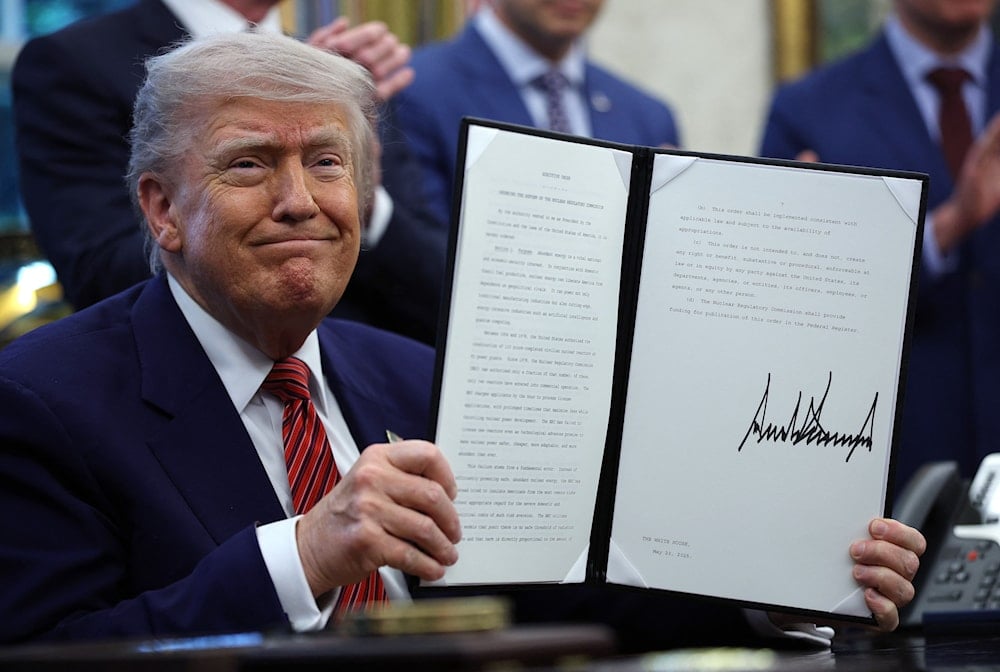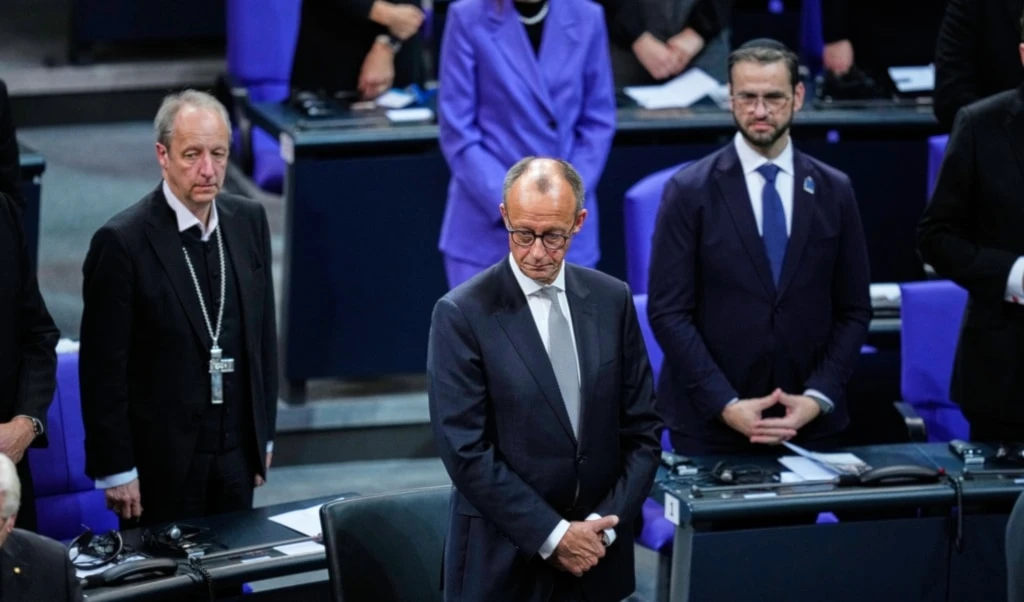Trump signs executive orders to accelerate US nuclear energy expansion
The executive orders include easing regulations, expanding uranium mining, and supporting small modular reactors.
-

US President Donald Trump holds up a signed executive order in the Oval Office of the White House, on May 23, 2025, in Washington, DC (GETTY IMAGES NORTH AMERICA / Getty Images via AFP)
US President Donald Trump signed four executive orders on Friday aimed at revitalizing the nuclear energy sector in the US by streamlining regulations, expanding uranium production, and supporting the development of small modular reactors.
“We're signing tremendous executive orders today that really will make us the real power in this industry,” Trump said from the Oval Office.
Trump pushes for nuclear growth
The Trump nuclear energy executive orders seek to ease the regulatory burden on nuclear reactor development and promote domestic uranium mining and enrichment, as the US continues to rely heavily on imports for its nuclear fuel supply.
The move aligns with the administration’s broader energy strategy to reduce dependence on foreign resources and meet rising electricity demand, particularly from the tech sector.
Trump emphasized that future growth would focus on smaller, more efficient reactors that cater to the needs of major technology and artificial intelligence firms requiring stable, carbon-free power.
10 new large nuclear reactors
He signed an executive order, which stipulates the launch of construction projects for 10 new large nuclear reactors within five years.
"To maximize the speed and scale of new nuclear capacity, the Department of Energy shall prioritize work with the nuclear energy industry to facilitate 5 gigawatt of power uprates to existing nuclear reactors and have 10 new large reactors with complete designs under construction by 2030," he said in the executive order, signed on Friday.
Focus on small modular reactors to meet tech demand
Trump also highlighted the role of small modular reactors (SMRs) as a cornerstone of the new policy, pointing to increased energy demands from companies like Amazon, Microsoft, and Google, which have recently pursued nuclear energy partnerships as part of their carbon neutrality goals.
Overhaul of US nuclear regulatory process
A central feature of the orders is a directive to accelerate decision-making by the Nuclear Regulatory Commission (NRC), requiring it to process applications for new reactors within 18 months. The administration has criticized the NRC as being overly cautious, and the new rules are intended to reduce delays in project approvals, according to a senior White House official.
Trump rejected concerns that the regulatory overhaul might compromise safety, stating, “We're going to get it very fast and very safe. It's time for nuclear and we're going to do it very big.”
Read more: Trump launches sweeping overhaul of National Security Council
Uranium mining, enrichment to be expanded domestically
Another key component of the executive orders is a renewed push for domestic uranium mining and enrichment. While the US has traditionally imported uranium from countries like Canada, Australia, Kazakhstan, Uzbekistan, and Russia, imports from Moscow were banned in 2024 following the start of its war with Ukraine.
The orders aim to close the supply gap and reduce reliance on foreign sources amid rising global uranium prices.
Declaring an energy emergency to reshape US energy policy
On his first day back in office, Trump declared an “energy emergency” to roll back policies implemented by former President Joe Biden and expand fossil fuel drilling. The new nuclear-focused measures add another layer to his administration’s broader energy agenda.
The senior White House official said the goal is to "test and deploy" new nuclear reactors before the end of Trump's second term in January 2029.
Read more: US, Saudi Arabia in talks on nuclear tech deal, says US energy sec.
Resurgence of nuclear power amid global energy shifts
Nuclear power is gaining renewed interest globally as countries seek carbon-free energy alternatives.
The US is witnessing a similar shift, driven by energy security concerns and climate commitments. Two US energy companies are preparing to bring reactors back online, including at Three Mile Island, the site of the most serious nuclear accident in US history in 1979.
Despite the legacy of the Fukushima disaster in 2011, which led some nations like Germany to abandon nuclear energy, Trump’s administration views it as essential to future US energy independence and innovation.
Michael Kratsios, Director of the White House Office of Science and Technology Policy, described the initiative as “historic", stating it marks the beginning of “an American nuclear renaissance.”
Read more: EU sought ship, port, energy ties in nixed proposal to Trump: Report

 4 Min Read
4 Min Read










